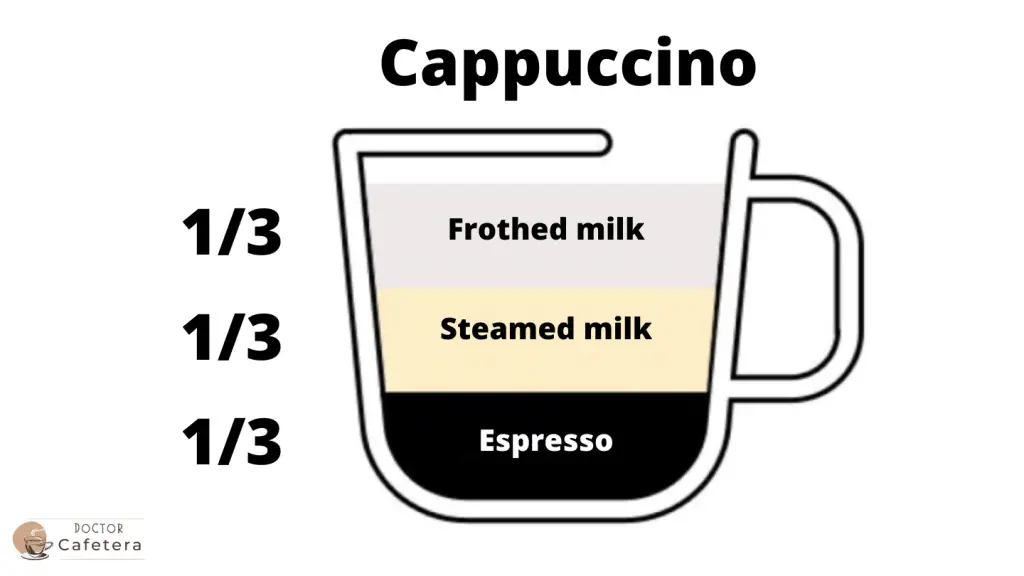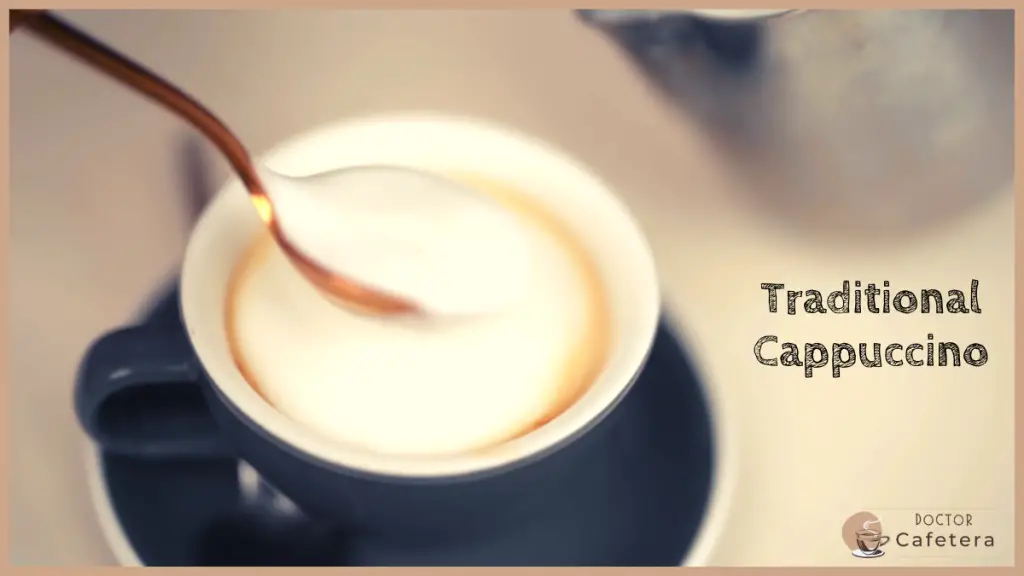Nowadays, if you ask for a cappuccino in different coffee shops, you can find many different drinks with the same name.
We can find glass jugs with three layers, giant bowls with cream, cinnamon, and chocolate, or some with lots of foam sticking out of the cup. We can also find smaller cups with more or less foam or latte art.
It isn’t very clear, but how this drink is prepared will indicate what kind of coffee shop we are in. Let’s go briefly to the origin of cappuccino so that you can understand it better.
A brief history of cappuccino
The word cappuccino comes from the Italian cappuccio, which means hood. Although the term cappuccino, as we know it today, comes from Italy, the original cappuccino coffee was created in Vienna (Austria) almost two centuries earlier.
The word cappuccio or cappuccina referred to the color of the habit worn by cappuccino monks at that time. A light reddish brown color is very similar to the color obtained by mixing coffee with milk or cream.
So, in the 18th century, a coffee called cappuccina began to be served in Vienna, which referred to the color of this beverage, but it was quite different from what we know today.
At that time, coffee was prepared by boiling the beans in water, then it was mixed with whipped cream and very commonly with spices such as cinnamon or chocolate; this was sure to add a little sweetness to the beverage because the type of coffee of that time was much more bitter than today.
In the twentieth century, the espresso machine was invented in Italy, and this new way of preparing coffee was used in coffee shops. From this moment on, the Italians redefined the cappuccino with a more standard recipe, which is the basis of what we know today as cappuccino.
Note: Cappuccino has changed little by little over the years in what we call the waves of coffee.
Preparation of the traditional cappuccino originating in Italy
To prepare the traditional cappuccino, a cup of 5 or 6 ounces (between 150 and 180 ml) of capacity should be used, adding an espresso of approximately 30 ml. Almost equally, added milk and milk foam to the rest of the cup.
In fact, in some coffee shops that offer the traditional cappuccino, much more air is added to the milk at the beginning of the steaming process. It is served by first adding the milk with the espresso coffee, and then with a spoon, the foam is added on top, remaining above the rim of the cup.
This is what the traditional cappuccino, which originated in Italy, is reduced to preparation with a lot of foam, a little milk, and espresso in a medium cup.
How is modern cappuccino different from traditional cappuccino?
With the passing of the years and the different waves of coffee, the skills to prepare cappuccino were improved, and more importance was given to the raw material. We began prioritizing the coffee to obtain good quality beans with traceability and quality controls.
Latte art also began to be implemented to make beautiful drawings on the coffee and treat the milk with more delicacy. A specific steaming process is carried out that enhances the flavor of the milk and makes it combine excellently with the coffee, obtaining an evolved beverage.
- Maintaining the traditional structure, a cup of the same size (150 – 180ml) is still used. An espresso is added to this cup, but now it will not be approximately 30 ml, but as many grams as necessary, depending on the coffee recipe you are using.
- The milk is vaporized, obtaining a bright, silky foam with micro-bubbles that are not visible to the naked eye. With just the right temperature, add a natural sweetness and a creamy texture that, together with the coffee, results in an incredible beverage balanced in flavor.
- Of course, latte art also helps the beverage to have a great appearance, making us enjoy this delicacy even more.
Why do we see so many variations in the preparation of cappuccino?
There is no answer beyond the fact that they were simply inventions of some coffee shops. In many cases, their menus or traditional menus only offered coffee with milk, cortado, machiatto, and not much more. Preparations that do not have any specific recipe or quantity of coffee or milk.
Then they began to offer, as specialty coffees or as something out of the ordinary, some of the names of the Italian menu, such as cappuccino.
Are cappuccinos in coffee shops authentic?
This thing about cappuccino being served in a little glass jug with three layers was not invented by an Italian, and perhaps it should be called something else.
When you see this kind of “cappuccino,” they are probably using cheap commercial coffee, and the milk will be boiled instead of frothed because they do not give the coffee the importance it deserves.
Some places offer a bowl of coffee with cream, cinnamon, and chocolate under the name of Italian cappuccino, which is also an invention. According to cappuccino history, perhaps it would be more correct to call it Viennese cappuccino, but with a different type of preparation.
Related:
Are there coffee shops where an authentic cappuccino is served?
Fortunately, with the arrival of quality coffee and the many coffee shops that have opened in recent years, we are beginning to see improvements in the quality of coffee, reflected in a much more correct menu. Fortunately, this is beginning to be the new normal.
Now, with this, I am not saying that coffee should not have chocolate or cinnamon; in fact, we find preparations such as mochaccino that contain chocolate and have thousands of options to add. If it is something you like, you should do it for pleasure; after all, you will drink the beverage.
In some countries, for example, cappuccino is served with a little bit of chocolate on top, which is not enough to turn it into a mochaccino, but only to give it a touch of decoration and a slight additional flavor.
You may be interested in:
Conclusion
The most important thing in any coffee preparation is the raw material used. With quality coffee, importance is given to the coffee from its origin and in all the processes up to the preparation. This makes it possible to drink it on its own, adding milk or other spices, as it will always be delicious.
Adding any ingredient to a good coffee will give this beverage a somewhat different but surely exquisite flavor because it already had it from the beginning. The quality of this coffee guarantees no need to add something to cover up a flavor we do not like.
I prefer to drink the modern cappuccino, as it seems to me that it has a better flavor than the traditional one. However, the flavor of the foam is not as pleasant as in the traditional cappuccino, as it is somewhat dry and astringent.



